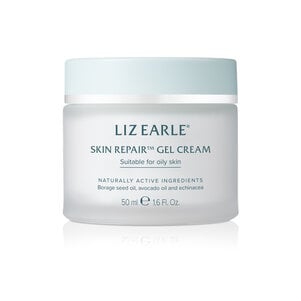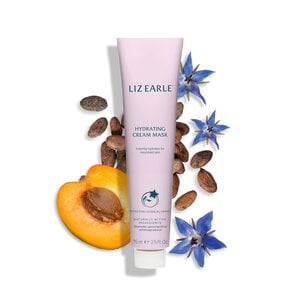
Basic skincare routine for beginners
August 3, 2024
3 min read
Want to build a skincare routine but don’t know where to start? With so many products available, it can be overwhelming to figure out what you really need. From promises of flawless looking, glowing skin to ten-step routines, navigating the skincare landscape can be daunting. While there’s no single miracle product that can do it all, the truth is, a simple and consistent routine tailored to your skin type can deliver significant results.
Here's everything you need to know to create a basic skincare routine for beginners that cleanses, refreshes and hydrates your skin morning and night.
Understanding your skin type
Before diving into skincare routines, it's important to understand your skin type. This can help you choose products that suit your skin, reducing the risk of irritation.Normal skin:
Balanced skin with minimal imperfections. It is neither too oily nor too dry. People with normal skin typically have a smoother skin texture and less prone to sensitivity or blemishes.Dry skin:
Skin that feels tight, rough and may have flaky patches. It lacks natural oils and can feel also feel itchy, often needing extra moisture.Oily skin:
Caused by an over-secretion of sebum – the skin's natural oil – especially in the T-zone (forehead, nose and chin), which leads to larger pores, more blemishes and a shinier complexion.Combination skin:
A mix of oily and dry areas, typically with an oily T-zone and dry or normal cheeks.Sensitive skin:
Can be overly reactive to irritants and can easily become prone to visible redness and feeling itching.Still not 100% sure on your skin type? Use our handy guide to explore the 5 main skin types and help you find your unique skin type.


What does a good skincare routine look like?
Step 1: Cleanse
Cleansing is the cornerstone of any skincare routine. Throughout the day, the skin accumulates dirt, grime and dead skin cells. Cleansing twice daily is essential to rid the skin of dirt, oil and impurities, promoting a healthy-looking complexion that feels refreshed.Morning: Use a gentle cleanser that suits your skin type. For normal to dry skin, choose a hydrating cleanser. For oily skin, a foaming or gel cleanser works best. Combination skin can benefit from balancing cleansers that don’t strip the skin of natural oils.
Evening: Double cleansing is especially important to do at night before you go to bed, especially if you wear make up or sunscreen. Start with an oil-based cleanser to break down make up and sebum, followed by your regular gentle cleanser.
Recommendation: Our powerful bio-enhanced cleanser, Cleanse & Polish™ Hot Cloth Cleanser, has been scientifically proven to boost hydration from the very first use. When paired with our pure cotton cloths, it lifts away dead skins cells for radiant, clearer-looking skin.
Step 2: Tone
For combination or oily skin, toners can help remove excess oil and reduce the appearance of pores . For normal, dry or sensitive skin types, toners can hydrate dry skin to help reduce the appearance of redness.You can apply a toner both morning and night. In the morning, it creates a great base for your make up, while providing a quick hit of hydration. In the evening, it can be used to help clean and nourish your skin.
How to use a toner: You can either choose to pour a generous amount of toner onto a reusable cotton pad and gently sweep it over your face and neck. Or, if you don’t have any cotton pads, pour the toner onto your fingertips, and pat it slowly into your skin.
Recommendation: Our Instant Boost™ Skin Tonic Toner refreshes, soothes and brightens the appearance of skin. Plus, it’s fragranced with an uplifting blend of pure essential oils, including rose-scented geranium, lavender and sweet orange.
Step 3: Moisturise
Moisturisers are ideal for hydrating the skin, locking in moisture and forming a protective barrier against environmental aggressors. It’s recommended to apply a moisturiser both in the morning and evening.Having a separate day and night moisturiser is key because they offer different benefits and formulations. Day creams are typically lightweight, allowing them to be absorbed quickly and leave your skin feeling comforted throughout the day, especially underneath make up. Whereas night creams are designed to leave your skin feeling nourished and revitalised overnight. They usually have a thicker formula, providing intense hydration and supporting the skin’s repair process as you sleep.
Recommendation: For the daytime, choose from one of our three Skin Repair™ moisturisers that best suits your skin type. The light cream is best for normal or combination skin, leaving it feeling supple and comfortable. The gel formula is best for oily skin, providing skin with a calm and refreshed feeling. If you have dry skin, opt for our rich formula, which leaves skin feeling soothed and comforted.
In the evening, turn to our Skin Repair™ Hydrating Night Cream. It’s scientifically proven to deliver an intensive moisture boost, so you awaken to skin that looks radiant, refreshed and rested.
Step 4: Sun protection
For the daytime, sunscreen is a must-have in any simple skincare routine. It helps to protect your skin from harmful UV rays, which can cause the visible signs of premature ageing, sunburn and risk of skin cancer.Broad-spectrum SPF: Broad-spectrum sunscreens protect against both UVA and UVB rays. UVA rays penetrate deeper into the skin, contributing to premature ageing and skin damage, such as age spots. Whereas UVB rays primarily cause sunburn and increase the risk of skin cancer.
Mineral Sunscreens: Create a physical barrier ideal for sensitive skin by reflecting and scattering UV rays before they penetrate the skin.
Chemical Sunscreens: Absorbing UV radiation and converting it into heat, they offer lightweight textures that blend easily into the skin for daily comfort and effective broad-spectrum protection.
Recommendation: Our Environmental Defence Cream Mineral SPF 25, as part of your sun and skincare regime can help support protection of your skin.


Top tips for a healthy skincare routine
Patch test new products: To avoid adverse reactions, always patch test new products on a small area of skin before incorporating them into your routine.Consistency is key: Skincare results take time. Be patient and consistent with your routine.
Hydration and diet: What you put into your body also affects your skin’s health. Be sure to drink plenty of water and maintain a balanced nutritional diet rich in antioxidants, vitamins and minerals.
Avoid over-exfoliating: Over-exfoliating can strip your skin of its essential natural oils, damaging the skin barrier. Stick to exfoliating one to two times a week.
Remove make up before bed: Never sleep with make up on. It can clog pores which in turn leads to breakouts.


Incorporating additional skincare products
Once you’ve mastered the basic cleanse, tone, moisturise routine, you can consider incorporating additional products to target specific skin concerns.Serums
Serums are concentrated formulations designed to target specific issues such as the appearance of wrinkles, dark spots or dehydration . Here are some options you can incorporate into your routine:Vitamin C: Helps to brighten skin, improve the look of texture and reduce the appearance of uneven hyperpigmentation . Best used in the morning under sunscreen.
Hyaluronic Acid: Hydrates and plumps the skin. Suitable for all skin types and can be used both morning and night. For best result, apply to damp skin after cleansing or toning.
Retinol: Derived from vitamin A, retinol promotes surface cell turnover and helps reduce the visible signs ageing. It’s best used at night and should be introduced gradually, starting with a low concentration. Retinol can increase skin sensitivity to sunlight, so it’s essential to always apply SPF during the daytime to protect your skin.
Exfoliants
Exfoliating helps to remove dead skin cells, revealing brighter and smoother skin. These can include:Chemical Exfoliants: AHAs and BHAs are gentle and effective. AHAs (like lactic acid) are great for dry skin, while BHAs (like salicylic acid) penetrate oily skin and clear pores.
Physical Exfoliants: Use with caution as they can be abrasive. Choose gentle scrubs with fine particles and use them no more than once a week.
Masks
Masks provide an extra boost of treatment and can address various visible skin concerns.Clay masks: Ideal for oily and blemish-prone skin. They absorb excess oil and help unclog pores.
Hydrating Masks: Suitable for dry and sensitive skin. Look for masks with ingredients like hyaluronic acid, aloe vera and glycerin.
Common skincare mistakes to avoid
Masks provide an extra boost of treatment and can address various visible skin concerns.Skipping Sunscreen: UV damage is the number one cause of premature ageing and skin issues. Always apply sunscreen, even on cloudy days.
Using too many products: More is not always better. Overloading your skin with too many products can cause irritation and breakouts.
Not following a consistent routine: Inconsistency can lead to mixed results. Stick to your routine for at least a few weeks to see noticeable improvements.
Ignoring your neck and chest: These areas are often neglected but are prone to showing visible signs of ageing.
Using skincare in the wrong order: A general rule of thumb is to layer your products from thinnest to thickest consistency. This ensures the lightweight formulations are absorbed first, followed by thicker products. For optimum results, take your time between each step – let each product set for several seconds before moving onto the next product.
Starting a basic skincare routine doesn't have to be complicated. By understanding your skin type and sticking to a few basic steps – cleansing, toning, moisturising and sun protection – you can build a solid foundation for radiant-looking skin. Here's to a journey of discovering and improving your skin!
SHOP THE PRODUCTS










